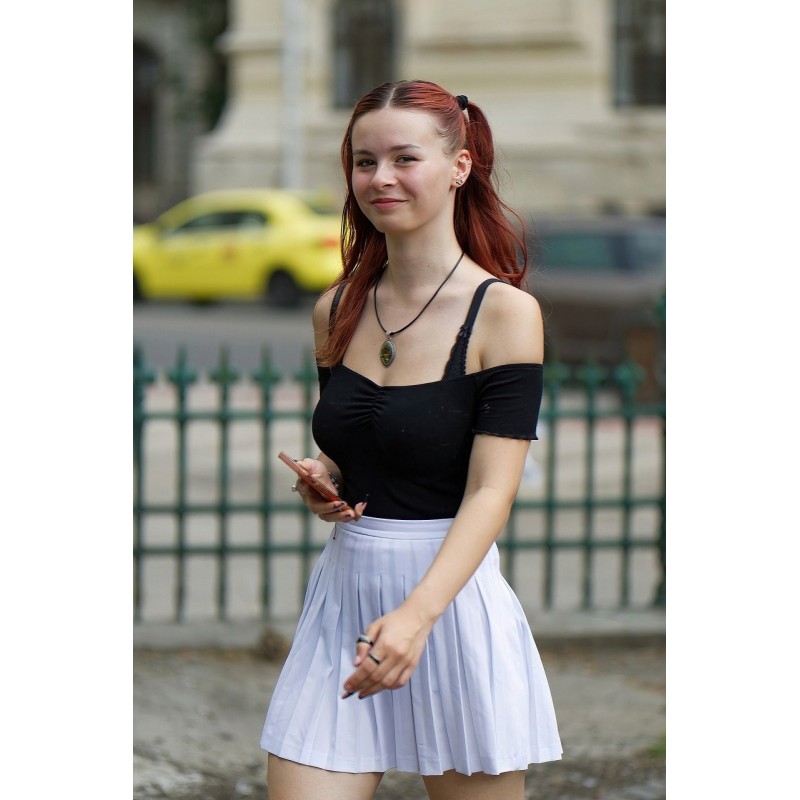







The Scottish pleated skirt, dressed in a contrasting image, oscillates between the demure schoolgirl and the sensual woman. Its history dates back to the 16th century, linked to Scottish kilts and tartan. Adapted to various styles, it goes beyond the school uniform to symbolize rebellion, youthful femininity and personal expression. However, its sexualizing nature among young girls gives rise to debates on the objectification of the female body. Fascinating and ambiguous, the Scottish pleated skirt crosses times and cultures, reflecting the contradictions of our society.
 Garanties sécurité
Garanties sécurité
(à modifier dans le module "Réassurance")
 Politique de livraison
Politique de livraison
(à modifier dans le module "Réassurance")
 Politique retours
Politique retours
(à modifier dans le module "Réassurance")
#ScottishSkirt #Schoolgirl #Tartan #Fashion #Uniforms
The plaid pleated skirt, also known as the "schoolgirl skirt", is a garment that sparks as much fascination as it does controversy. Its rich and complex history mixes with current fashion trends, creating a paradox between tradition and provocation.
Tartan, the iconic checkered fabric of the Scottish pleated skirt, has its origins in the Scottish Highlands. Each Scottish clan had its own pattern and colors, serving as both identification and social marker. Over the centuries, tartan has become a Scottish national symbol, worn proudly at cultural and patriotic events.
The plaid pleated skirt comes in a variety of styles and lengths. The mini skirt, the most popular version, is often associated with a provocative and sexy look. The midi skirt, longer and more demure, offers a more modest alternative. As for the long skirt, it brings a touch of elegance and sophistication.
The exact origin of the Scottish pleated skirt remains uncertain. Some trace it back to girls' school uniforms in Scotland in the 19th century, while others attribute its popularization to punk fashion in the 1970s. Regardless of its origins, the Scottish pleated skirt has become a staple of women's fashion, appearing regularly on catwalks and in fashion magazines.
The Scottish pleated skirt is often associated with school uniforms, especially in Anglo-Saxon countries such as England and Japan. In these contexts, it symbolizes discipline and order, while also representing identity and belonging to a school community. However, the plaid pleated skirt was also used by students to express their individuality and challenge established rules, becoming a symbol of subversion and rebellion.
The Scottish pleated skirt is a real commercial success. Millions of copies are sold every year around the world. Its popularity is particularly strong in Asia, notably in Japan and South Korea, where it is often associated with Kawaii and Lolita fashion.
The Scottish pleated skirt is a versatile garment that can be combined in different ways. For a classic look, opt for a simple plain t-shirt or sweater. For a more rock style, pair it with a perfecto and boots. You can also play with accessories by adding a necklace, bracelet or handbag.
The Scottish pleated skirt is an iconic garment that crosses times and cultures. Its rich and complex history mixes with current fashion trends, creating a paradox between tradition and provocation. Its global popularity and versatility make it a staple of a woman's wardrobe, while sparking debates about its appropriation and meaning.